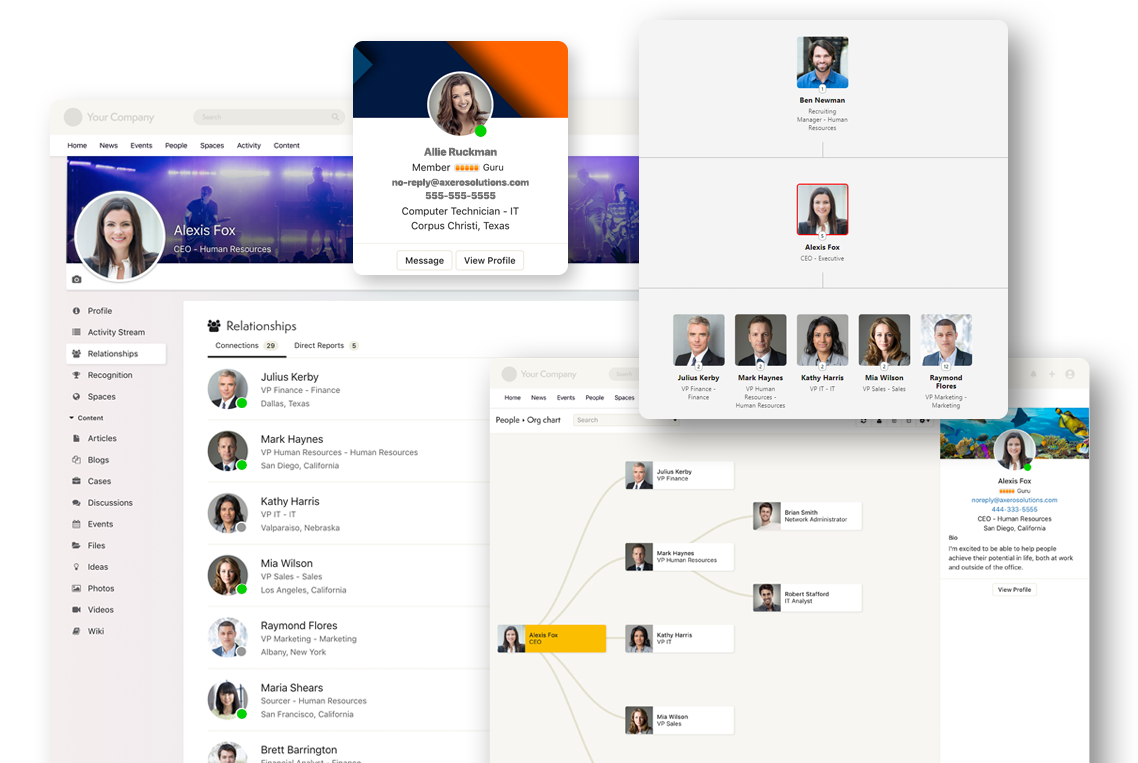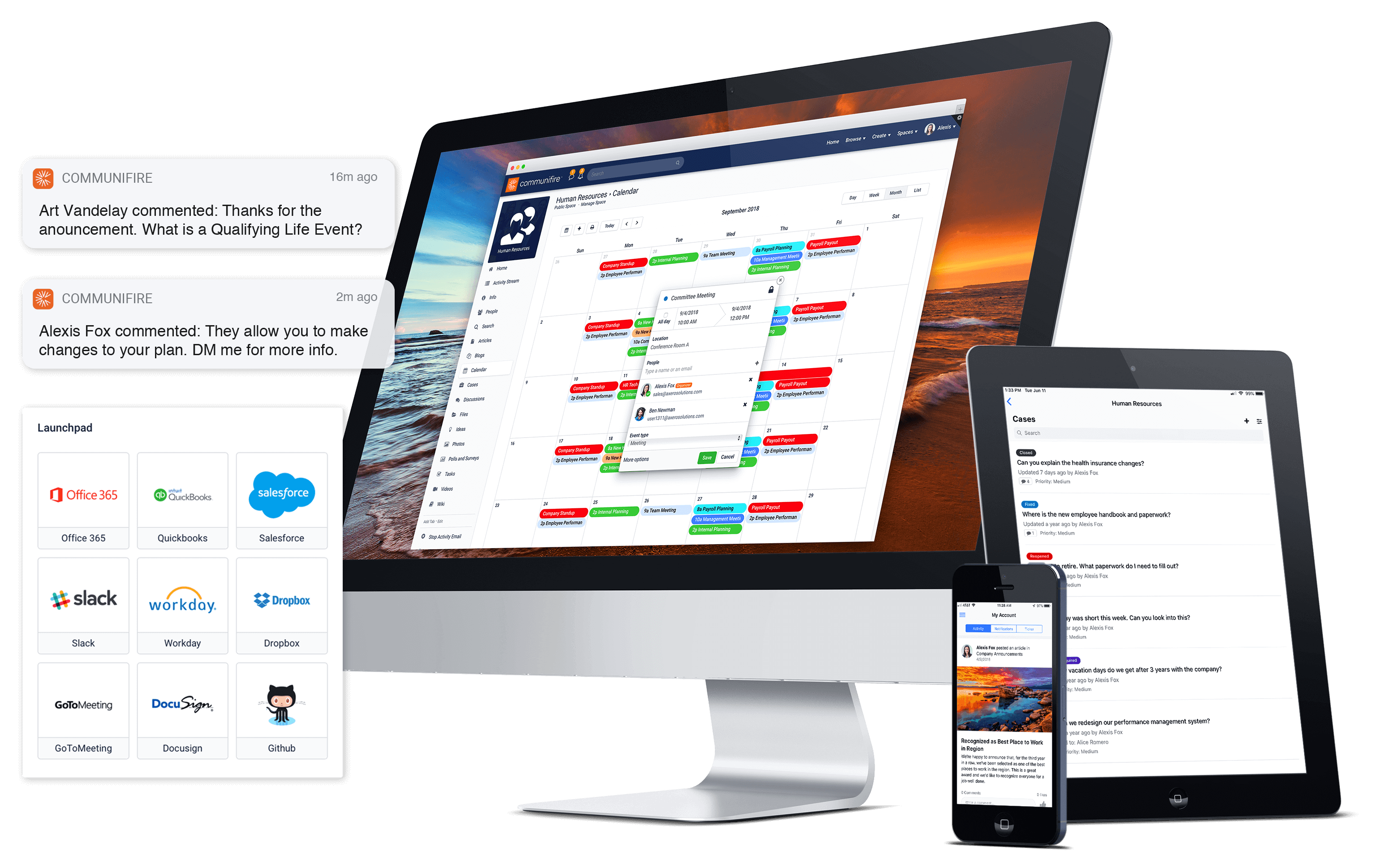Each of us was born as an individual, separate from others. It makes sense that collaboration becomes an essential skill for us all to acquire and master in order to effectively work and interact with others in groups or communities, including in the workplace.
Today’s work environment is driven by collaboration and enabled by digital collaboration tools. Research shows 9 in 10 knowledge workers believe that digital collaboration across remote, in-person, and hybrid employees is here to stay and will play a crucial role in their day-to-day responsibilities. Further, the majority of office workers said they saved, on average, between 3 to 5 hours per week when provided with the right communication tools at work.
Without a doubt, collaboration brings people together — tackling challenges, solving problems, and working towards shared goals.
If your question is how to encourage such collaboration, you are in the right place! We will walk you through the very definition of collaboration, what it looks like in the workplace, and actionable tips for facilitating team collaboration and maximizing productivity at work.
Definition of collaboration: What is collaboration?
Collaboration is when two or more members of a team work together to brainstorm new ideas, solve problems, complete projects, and achieve common goals. It helps individuals contribute their unique strengths, perspectives, and expertise while also benefiting from the collective knowledge and skills of others in the group.
It is important to note that effective collaboration requires open communication, active participation, and mutual respect among team members or participants. Besides performing your role at work, collaboration is a task that requires teamwork on its own. What we mean is one person can only do so much to build collaboration. It is truly a team effort that contributes to team collaboration.
Collaboration VS Teamwork: What’s the difference?
While “collaboration” and “teamwork” are often used interchangeably, they carry different meanings.
Collaboration refers to individuals or groups working together to achieve a collective goal, often incorporating diverse expertise, perspectives, and different backgrounds. Teamwork, on the other hand, refers to the coordinated efforts of individuals within a team to achieve a specific objective.
Let’s look at an example of a software development team working on a mobile application project.
- Teamwork: The team members have specific roles and responsibilities related to their expertise. They work together, coordinating their efforts to achieve the project goal. Each member relies on the others’ work to complete their tasks and achieve the objective.
- Collaboration: The team faces a challenge with the user interface design. They come together to gather feedback and improve the design. Each member contributes their expertise and perspectives to refine the design, resulting in an improved solution.
Teamwork in this scenario refers to the coordinated efforts of team members to complete their assigned tasks and achieve the project objective. Collaboration, on the other hand, focuses specifically on the collective effort of the team members to solve a specific problem, leveraging their diverse expertise and perspectives to find the best solution.
Collaboration in the workplace: What does a collaborative environment look like?
Collaboration in the workplace taps into a culture that encourages and supports teamwork, open communication, and the sharing of ideas and resources among employees.
One key aspect of workplace collaboration is the presence of strong interpersonal relationships. Employees feel comfortable reaching out to their colleagues for assistance, advice, or feedback. They trust and respect one another, creating a sense of psychological safety that fosters open dialogue and creativity.
Communication is another crucial element. There should be channels for effective and efficient communication, such as regular team meetings, shared digital platforms, and open-door policies. In turn, active listening and constructive feedback are valued because they allow meaningful exchanges and continuous improvement.
Also, information should be shared transparently to ensure everyone has access to the necessary knowledge and resources to contribute effectively. When you think about it, it is nothing more than providing people with the support they need.
We don’t mean to brag, but Axero can wear many hats when it comes to facilitating collaboration at work. Our intranet software can serve as an internal communication channel that gets everyone on the same page and as a knowledge base that centralizes all of your company assets in one place — all of which contribute to a more synchronized, successful collaboration.
As we mentioned, collaboration in the workplace is ultimately about the culture. Collaborative teams also value and celebrate diversity. They recognize the unique strengths and perspectives of each individual, promoting inclusivity, equal participation, and knowledge sharing. Ideas are welcomed from all levels of the organization, and decision-making processes are democratic and inclusive, involving input from various stakeholders. This diversity of thought leads to innovative and creative solutions and avoids groupthink (which, more often than not, results in unchallenged, poor-quality decision-making).
When a workplace allows flexibility and adaptability, collaborative teams have the autonomy to experiment, take risks, and learn from failures. Structures and processes are designed to support team collaboration, with flexible work arrangements, cross-functional teams, and project-based assignments. This way, hierarchies and silos are minimized, promoting a sense of shared ownership and collective responsibility.
Employees can thrive easily in a workplace that emphasizes continuous learning and growth. They can develop new skills, share knowledge, and engage in professional development opportunities. In a collaborative workplace, learning is seen as a collective endeavor, where individuals support and mentor one another, fostering a culture of growth mindset and intellectual curiosity.
Benefits of collaboration: How can team collaboration help increase productivity at work?
Team collaboration has many benefits that can significantly enhance productivity in the workplace. When individuals work together towards a shared goal, they can leverage their collective strengths and expertise to achieve better outcomes.
Shared knowledge and expertise
By pooling diverse perspectives, skills, and experiences, team members can tap into a broader range of ideas and solutions. This exchange of expertise fosters innovation and problem-solving, resulting in more effective and efficient outcomes.
Knowledge and expertise shared can also be documented, disseminated, and utilized by others. This helps ensure that important information is not lost when employees leave or circumstances change. And one of the very best ways to capture this process is to build a company knowledge base that can preserve your organizational knowledge and serves as a wiki for your employees.
Improved decision-making
Collaborative environments allow for multiple viewpoints to be considered when making decisions. By engaging in open discussions and brainstorming sessions, teams can explore different possibilities and evaluate various options. This collaborative decision-making process often leads to better-informed choices and reduces the risk of overlooking important factors.
Enhanced creativity
When individuals collaborate, they can build upon each other’s ideas, sparking innovation and pushing boundaries. Teams can develop more imaginative and breakthrough solutions by combining different perspectives and approaches, leading to increased productivity.
Increased accountability and motivation
Collaboration promotes a sense of shared responsibility among team members. When working together, individuals are more likely to feel accountable for their contributions and take ownership of the team goals. This shared commitment fosters a positive work culture, motivates individuals to perform at their best, and ultimately drives productivity.
Effective task allocation and specialization
Collaborative efforts enable teams to allocate tasks based on individuals’ strengths and expertise. By recognizing each team member’s unique skills, roles can be assigned accordingly, ensuring that the right people are working on the right tasks. This specialization improves efficiency, as team members can focus on what they do best.
Streamlined communication and coordination
Collaboration promotes effective communication and coordination within a team. Through regular meetings, updates, and ongoing collaboration, team members can stay informed about project progress, share feedback, and address any challenges promptly. Clear communication tools and channels help streamline workflows, minimize misunderstandings, and ensure everyone is on the same page. They all contribute to increased productivity.
Building workplace collaboration: Do’s and Don’ts
If you have read this far, we believe you agree that collaboration in the workplace is crucial for a thriving and productive team. Here are some key do’s and don’ts to help you encourage productivity among team members and avoid common pitfalls that can hinder team collaboration.
1. Foster a culture of open communication
Whether you are a leader or a fellow team member, it is always a good idea to encourage everyone to share their ideas, concerns, and feedback openly — a little “hey, what are your thoughts on this” goes a long, long way!
It is everyone’s job to create an environment where one another feels comfortable speaking up and actively listening to others. This promotes transparency, trust, and effective collaboration.
2. Establish clear goals and expectations
Perhaps this is for managers and leaders out there; it is best that you clearly define the objectives, roles, and responsibilities of each team member. As everyone understands how their work contributes to the overall goal, they can align their efforts and collaborate more effectively towards a common purpose.
This clarity of purpose enables everyone to work with a sense of direction and focus, make informed decisions, leverage their strengths, and achieve optimal results.
3. Encourage diversity and inclusivity
Besides having open, honest communication, embracing the diversity of thought, skills, and backgrounds within the team is as important.
Being open to diverse viewpoints does not imply that you have to agree with everyone, but rather that you are willing to listen, consider alternative perspectives, and engage in constructive dialogue. This is why it is imperative to create an environment where individuals feel comfortable expressing their opinions without fear of judgment or reprisal.
4. Provide the right collaboration tools and technologies
Equip teams with digital collaboration tools that facilitate seamless communication, file sharing, and project management. Choose tools that align with the team’s specific needs and workflows, making collaboration easier and more efficient.
5. Promote teamwork and cross-functional collaboration
This goes back to where we differentiated between “teamwork” and “collaboration” earlier. To achieve successful collaboration at scale, it is best to promote collaboration not only within individual departments or teams but also across different departments or teams, or the entire company.
This approach helps to foster a holistic perspective when it comes to problem-solving and decision-making, as it brings together diverse expertise and viewpoints.
6. Don’t micromanage
If you manage a team, avoid excessive control or micromanagement of your team members. Trust their abilities and give them the autonomy to make decisions and contribute their unique skills. Micromanagement stifles creativity, hampers collaboration, and undermines trust within the team.
After all, collaboration is built upon trust, and trust cannot be built when team members feel suffocated by excessive control or micromanagement.
7. Don’t dismiss or ignore ideas
Value every team member’s contributions and ideas, regardless of their seniority or experience — the most junior team members, or even new hires, should have their chance and their say.
Avoid dismissing or ignoring ideas without proper consideration. This way, you create a safe space for sharing ideas, where constructive feedback is encouraged, and all perspectives are taken into account.
8. Don’t encourage silos or individual competition
Silos often result in limited cross-functional interaction and a lack of coordination, which can impede collaboration in the workplace.
Discourage silos and individual competition that can hinder team collaboration. Instead, foster a collaborative mindset where individuals are willing to share information, resources, and expertise with others. Emphasize the collective success of the team over individual achievements.
9. Don’t tolerate disrespectful behavior
Embracing diversity of thought does not mean tolerating harmful or discriminatory behavior. Leaders must set clear expectations for respectful and professional behavior within the team. Address any instances of disrespect, discrimination, or harassment promptly and effectively.
The key is, again, to create a safe and inclusive work environment where everyone feels comfortable and valued.
10. Don’t neglect team-building activities
Team building activities help foster stronger relationships and trust among team members. Don’t neglect opportunities for team bonding, whether through social events, team-building exercises, or virtual activities. These activities promote camaraderie and create a positive collaborative atmosphere.
Never underestimate the power of a happy hour or a company outing! These employee engagement activities can really help increase a strong sense of community, which is key to team collaboration.
The bottom line
Collaboration is the key to unlocking creativity, innovation, and collective success. By bringing together individuals with diverse skill sets, knowledge, and perspectives, collaboration allows us to achieve more than what we can accomplish alone.
Embracing collaboration, fostering a collaborative environment, and leveraging the right tools and technologies empower individuals and organizations to thrive in an increasingly interconnected world.



















 info@axerosolutions.com
info@axerosolutions.com 1-855-AXERO-55
1-855-AXERO-55


